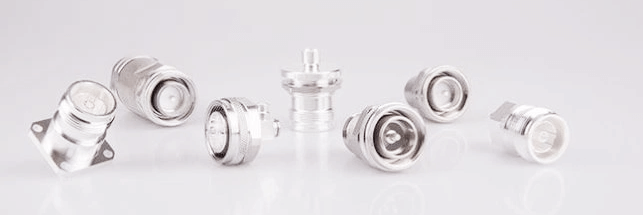The 4.3/10 connector is a popular connector used in wireless communication systems, such as cell towers, base stations, and antennas. Although the 4.3 10 male connector is intended to deliver dependable and consistent performance, like any connector, it is subject to problems that may degrade the signal quality and negatively impact system performance as a whole. In this article, we’ll go over some typical issues with 4.3/10 connectors and how to fix them.
Poor Signal Quality
Poor signal quality is one of the most frequent problems that can happen with 4.3/10 connectors. Dropped calls, slow data speeds, or sporadic connectivity are some examples of this. Numerous things, such as faulty installation, damaged connectors, and environmental conditions, can result in poor signal quality.
Checking the connectors for wear or damage is the first step in troubleshooting poor signal quality. Replace the connectors if they appear to be damaged. The installation will then be examined to see if the connectors are in good condition. Make sure the connectors are oriented correctly and torqued appropriately. The cable’s preparation and termination must be done correctly as well. Last but not least, look around you for any potential sources of interference, such as other wireless devices or power lines that are close by.
Connector Damage
Physical damage to 4.3/10 connectors is another frequent problem that can result from improper handling or the environment. Numerous problems, such as poor signal quality, sporadic connectivity, and even system failure, can be brought on by connector damage.
Check the connectors for any physical damage, such as cracks or dents, to identify the problem. The connectors ought to be changed if the damage is discovered. It is also crucial to ensure the connectors are adequately shielded from environmental elements like heat and moisture. The connectors can be shielded from harm using weatherproofing materials, such as silicone sealant or heat shrink tubing.
Incorrect Installation
Another common cause of issues with 4.3/10 connectors is improper installation. Poor signal quality, sporadic connectivity, and even system failure can occur if the connectors are not installed properly. The use of incorrect torque value, incorrect orientation, and improper cable preparation are a few common installation mistakes.
Start by reading the instructions for the specific connector and cable type to troubleshoot the improper installation. Ensure that the torque value and orientation are correct. The cable’s preparation and termination must be done correctly as well. Check it twice to ensure that every connection is strong and correctly positioned.
Compatibility Issues
Compatibility problems with other system components are another potential issue with 4.3/10 connectors. This might happen if different cables or connectors are used in various system components or the equipment is upgraded or replaced.
To start troubleshooting compatibility issues, check the specifications of all the system’s components to ensure they are appropriate for the 4.3/10 connector. If compatibility problems are found, changing the system or replacing the equipment might be necessary to guarantee compatibility.
Conclusion
A crucial part of many wireless communication systems is the 4.3/10 connector. The performance of the system as a whole and the signal quality could be impacted by issues with it, though. You can ensure that your system functions dependably and effectively by knowing the typical problems that 4.3/10 connectors can experience and how to fix them. Taking the time to locate and fix the issue can help you quickly get your system up and running, regardless of whether you are experiencing poor signal quality, connector damage, improper installation, or compatibility problems.
